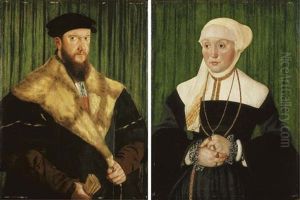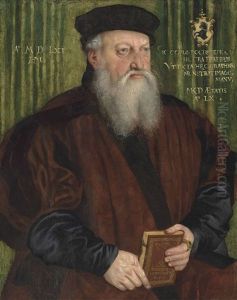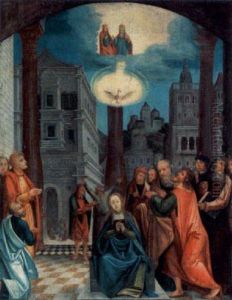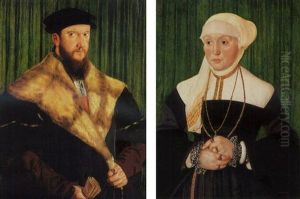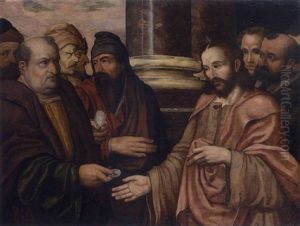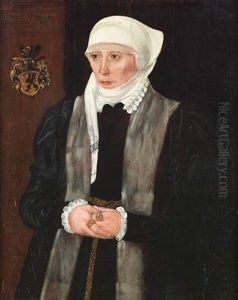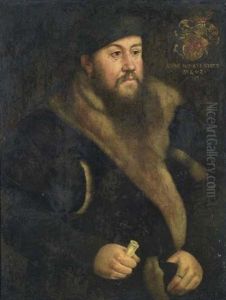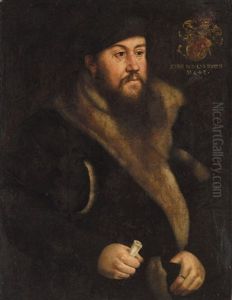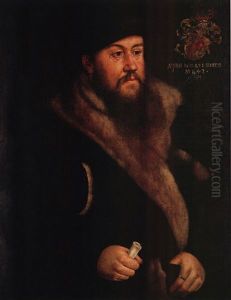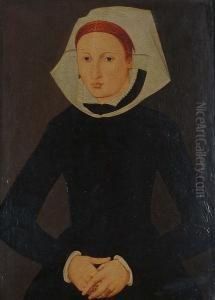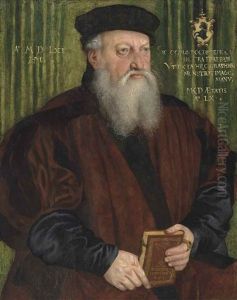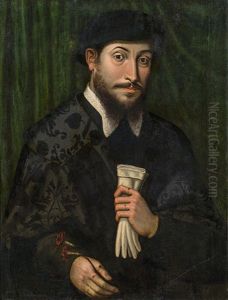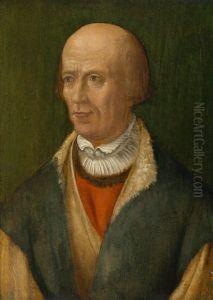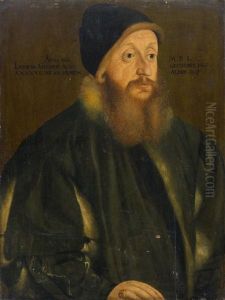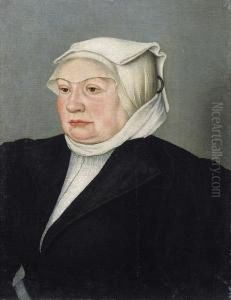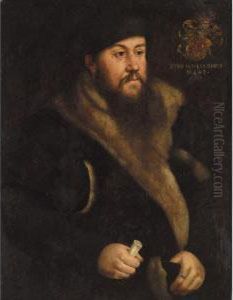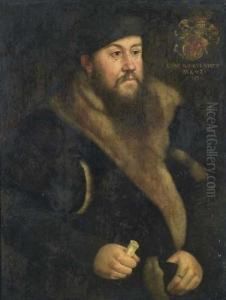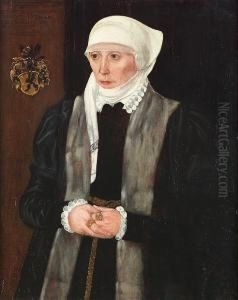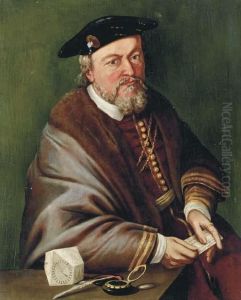Hans Mielich Paintings
Hans Mielich, also known as Hans Muelich or Johann Mielich, was an eminent German painter and illustrator working primarily in Munich during the Renaissance period. Born in 1516 in Munich, he was one of the most important artists in the Bavarian court during the 16th century.
Mielich's early life and training remain somewhat obscure, but it is believed that he was a pupil of the painter Wolfgang Leb from whom he would have received his initial artistic education. In 1536, Mielich became a master painter. His style is characterized by careful attention to detail and a clear influence from leading artists of the Italian Renaissance, which he likely absorbed through direct contact with Italian art or through prints and drawings that circulated in Europe at the time.
Throughout his career, Mielich worked for Duke Albrecht V of Bavaria, for whom he executed numerous commissions. His works for the Duke included altarpieces, portraits, and elaborate manuscript illuminations. Mielich is particularly noted for his contributions to the Munich court's library, where he illustrated several books, including a famous codex known as the 'Munich Prayer Book' (Bayerische Staatsbibliothek, Clm 23637), which is still celebrated for its elaborate and intricate miniatures.
Mielich's religious works exhibit a fine sense of color and detail, and they often depict their subjects with a sense of serenity and poise. One of his significant religious paintings is the altarpiece for the Church of St. Wolfgang in Pipping, near Munich, completed in 1583.
In addition to his paintings, Mielich also created a number of drawings, many of which served as designs for stained glass windows. His style as a draughtsman was precise and linear, reflective of the Northern Renaissance's preoccupation with meticulousness and a high level of finish.
Hans Mielich died in Munich in 1573, leaving behind a body of work that significantly contributed to the cultural and artistic life of Bavaria. His legacy is evident in the continued appreciation of his works in museums and collections in Germany and beyond, and he is remembered as a key figure in the history of Bavarian Renaissance art.
